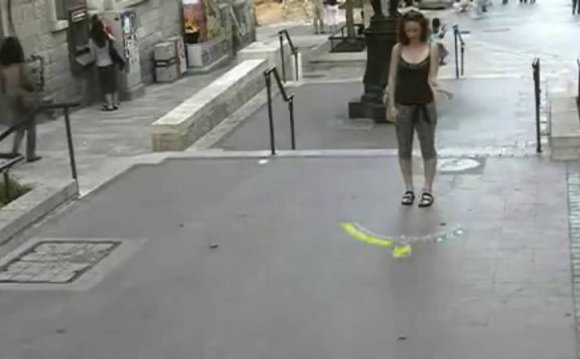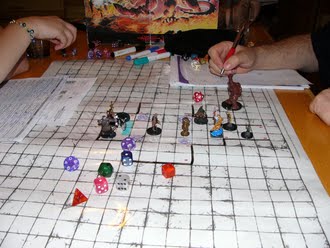
The medical sector is usually at the forefront of technological deployment. Any innovation that has the potential to drive discovery in research, improve medical operations and enhance patient care is likely to see some implementation. While some deployments have more wide-ranging and long-lasting effects than others, technology continues to spur understanding and progressive treatment in this essential field.
Even by these advanced and tech-savvy standards, 3D technologies are drawing significant attention for their exciting potential. The demonstrated and predicted benefits of 3D visualization technologies, imaging, software and printing in research and medical care are helping to revolutionize the discipline. Their widespread implementation promises to spur new strategies for identifying and diagnosing patient conditions and administering medical care, making the complex processes in dozens of specialized fields safer, more efficient and better informed.
 3D holography, in particular, stands to enhance visual understanding of the human body. What 3D holographic technologies offer that other visual forms cannot is the ability to show parts of the human body in a real-life fashion. Furthermore, they are interactive, enabling medical practitioners to not only study images of the body, but to do so easily and from multiple perspectives. The capacity for enhanced visual engagement can benefit research, diagnostic efforts and treatments, as sophisticated 3D software, displays and can be synthesized for a realistic, real-time look at patient conditions.
3D holography, in particular, stands to enhance visual understanding of the human body. What 3D holographic technologies offer that other visual forms cannot is the ability to show parts of the human body in a real-life fashion. Furthermore, they are interactive, enabling medical practitioners to not only study images of the body, but to do so easily and from multiple perspectives. The capacity for enhanced visual engagement can benefit research, diagnostic efforts and treatments, as sophisticated 3D software, displays and can be synthesized for a realistic, real-time look at patient conditions.
3D holography can improve medical training
One issue in medical training that previously seemed insurmountable was the lack of tools that allowed students to interact consistently with real human anatomy. If training is mostly confined to images seen in textbooks and on film, as well as occasional work with cadavers, many students have limited opportunities to engage directly with human anatomy. With 3D holograms, such as, students can get better insight into the human form. The interactive, detailed human anatomy hologram lets students examine the actual 3D structure of the human body, rather than the 2D images that would be available in textbooks and computer-based learning tools. One study found that students who use medical holograms perform better than their textbook-informed counterparts, as they have a greater understanding of the myriad, minute spatial relationships in the human body.
Armed with a better understanding of the human body, medical students can process information quickly and continue to enhance their own learning. This can give them a significant boost when it comes time for residencies and initial hands-on experiences with living subjects. Since accuracy, efficiency and attention to detail can make a significant difference during medical procedures, it's essential that students receive the most advanced training available.
'Floating' 3D holograms enhance medical procedures in real time
The potential advantages of 3D holographic technology are not limited to the classroom. An Israeli firm, Realview Imaging, recently unveiled a 3D holographic imaging tool that enables doctors to actually of a patient's anatomy during operations, reported the Atlanta Journal-Constitution. The technology, which is currently undergoing an intense trial period, presents visuals of the patient's anatomy that appear to be "floating" in mid-air. Doctors would gain real-time insight into a patient's condition, helping to improve operating procedures, identify potential complications and serve as a visual supplement to the real thing.
"Doctors deal with patients. Patients are built of tissues and things that move, " Dr. Elchanan Bruckheimer, who helped develop the technology, told the Journal-Constitution. "If we want to intervene and treat those things, looking at them as they actually are in real life, in real time, is definitely going to improve the way we perform our procedures, how successful we are in those procedures and the time it takes to do those procedures."
The system is made possible through the combination of two existing technologies - 3D holography and anatomical data, such as that gleaned from an X-ray, MRI or ultrasound imaging. It would allow doctors to plan out operating procedures and understand the potential effects of difficult and minute decisions. Having the technology on hand could help save lives.
RELATED VIDEO




 Dungeons & Dragons (abbreviated as D or DnD) is a fantasy role-playing game (RPG) originally designed by Gary Gygax and Dave Arneson, and first published in 1974 by Tactical Studies Rules, Inc. (TSR). The game has been published by Wizards of the Coast since 1997...
Dungeons & Dragons (abbreviated as D or DnD) is a fantasy role-playing game (RPG) originally designed by Gary Gygax and Dave Arneson, and first published in 1974 by Tactical Studies Rules, Inc. (TSR). The game has been published by Wizards of the Coast since 1997...







